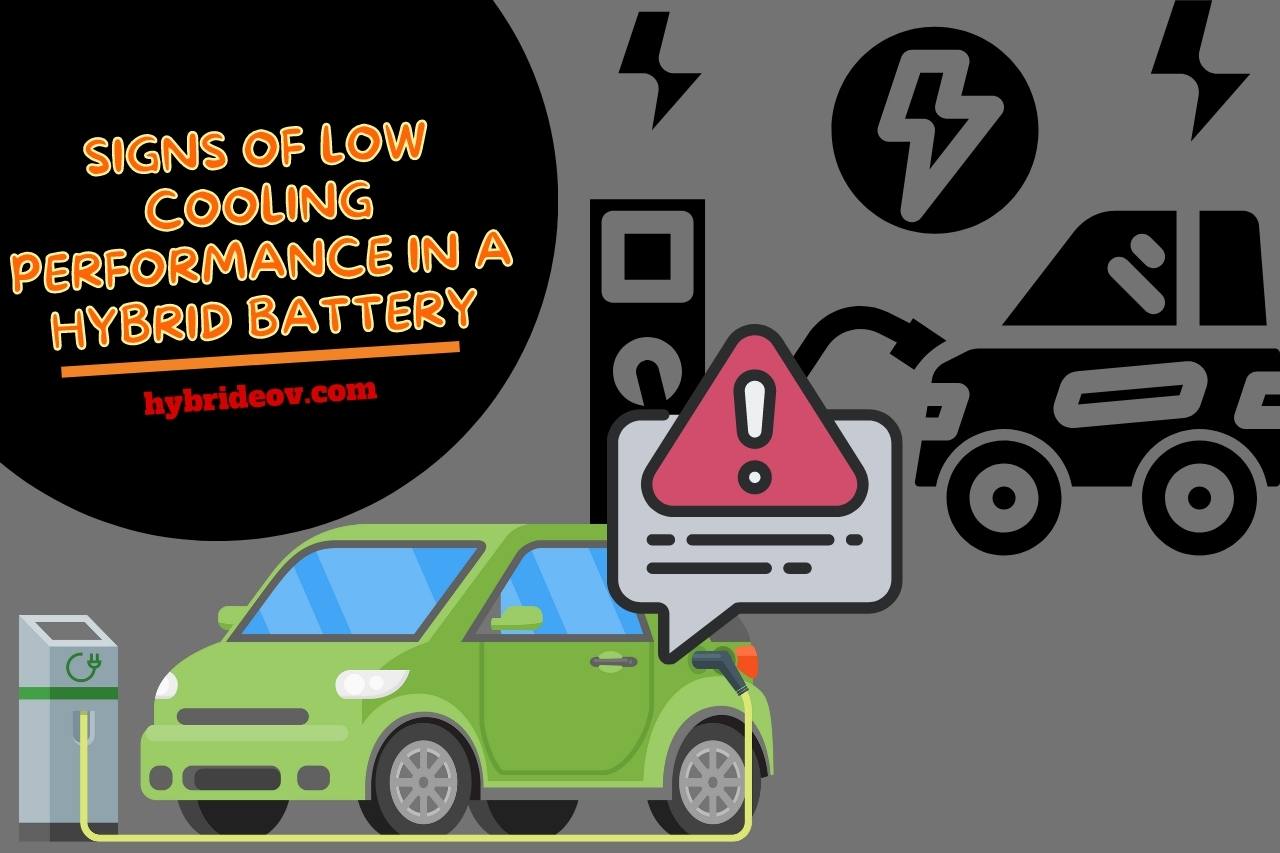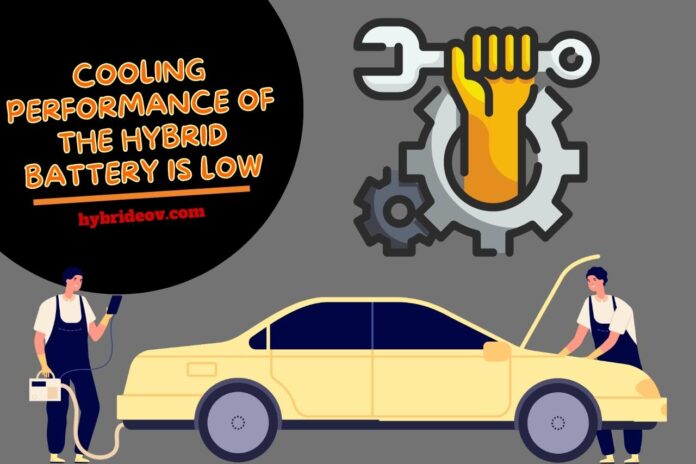Rechargeable batteries provide the power for electric vehicles to move. Additionally, the batteries on these cars tend to get hot as they charge the motors with electricity. Consequently, a heating and cooling system is required. What should one do if the cooling performance of the hybrid battery is low?
Learn the causes and how it affects the battery life of your vehicle, along with the signs of this issue. Get to know what to do when the cooling performance of the hybrid battery is low and how to improve it.
What Causes Low Cooling Performance in Hybrid Batteries?
The Radiator is Clogged
Because of improper coolant flow caused by clogged radiators, your battery won’t receive the necessary cooling.
Prolonging the Hybrid Battery’s Use
The hybrid battery’s energy decreases dramatically over time when it is used extensively. The hybrid battery’s ability to cool thus declines dramatically.
Temperature Extremes
The cooling of liquids is essential to hybrid systems in order to maintain the proper temperature for their batteries. In extremely hot or cold conditions, it requires additional power to keep the ideal temperature for efficient functioning.
The Tank Holding the Coolant has Leaks
Leaks that eventually emerge in the fluid reservoir tanks might cause air to be pulled into the refrigeration system, thereby lowering the cooling system’s efficiency.
Incorrect Use of the Charger
Your hybrid car’s batteries will be negatively impacted by an imbalanced voltage supply, which will result in a cooling system that runs less efficiently.
How Does Low Cooling Performance Affect Hybrid Battery Life?
At cold temperatures, the functioning across all batteries suffers significantly; nevertheless, the increased resistance inside will produce some heating effect due to diminished efficiency resulting from a voltage drop while applying increasing power.
The vast majority of batteries function at around 50% of their capacity at -20°C (-4°F).
Temperature changes cause a decrease in battery life and a boost in capability. This is the reason why, although working well the day before, your automobile battery fails on a chilly winter morning.
When selecting the system’s power sources, the lower capacity must be considered if the cells spend a significant portion of the year trembling in the chill.

Signs of Low Cooling Performance in a Hybrid Battery
Given the insulation’s excessive thermal conductance, the message “Cooling performance of the hybrid battery is low” is produced. Furthermore, improper grounding may allow an electric current to pass into nearby metal items, raising the temperatures of those things as a result.
The radiator’s fluid level should be checked first and, if necessary, topped off. After that, make sure the coolant is clean and undamaged by inspecting its state of it. If so, you should clean the system and add new coolant.
The cooling fans’ functionality should then be checked. Check to see that they are operating at full speed and turning on as they should.
If not, clear away any dirt from the fan rotors and make sure the motor that drives it is operating correctly.
Finally, look at the radiator pipes and fins to see how they are doing. Make sure there are no obstructions in the flippers and that all of the hoses are secure and not spilling.
When everything appears to be in order there, you might need to get the air conditioning of the hybrid checked out for any additional problems by an expert.
What to do When Cooling Performance of the Hybrid Battery is Low?
Radiator Block
Maintain your maintenance plan and let a professional handle any concerns to prevent this issue.
Prolonging the Life of the Hybrid Cell
The average hybrid driver needs a new cell after approximately 100,000 miles. Therefore, you ought to begin considering a battery replacement immediately as you reach 90,000 miles.
Temperature Extremes
Employ a battery’s thermal control system to reduce the impact of elevated temperatures on hybrid cells.
The temperature control system for the battery can lower the battery’s internal heat production and assist it in maintaining cool temperatures.
Leaks Inside the Container Holding the Coolant
You should immediately address leaks within the coolant storage tank to guarantee your hybrid cell retains the highest level of dependability.
Utilizing a Charger Incorrectly
It is crucial to remember that a power source might overheat and have performance concerns if it receives too much electricity.
It is advised that you only utilize it when its battery is low on power or entirely discharged.
Insufficient airflow should never be used to charge a hybrid car. Limit the amount of time the car is hooked to no more than eight hours.
How to Improve Cooling Performance for Hybrid Batteries?
If neither of the aforementioned repairs work, you might need to buy an entirely new hybrid car cell.
The performance of the battery will immediately increase. By averting the development of other battery-related issues, it will also ultimately save you money.
Buying an extra hybrid cell that you may use while recharging your previous one is an additional choice. Online retailers provide these batteries for reasonable costs, which is frequently a lot less expensive than buying them from a nearby dealer.
The third choice is to trade in your old hybrid car and get a new one that runs on a different fuel.
You may also utilize a power source in place of diesel or petrol. You may also minimize heat and stop your air conditioner from working too hard by tinting your windows.
In order to increase the dependability and lifetime of hybrid electric cars, battery cooling efficiency is a key consideration. Manufacturers of hybrid vehicles should take steps to increase cooling capacity, such as enlarging a battery chiller or installing an air-conditioning system.
Can Hybrid Battery be Repaired?
Motorists have two options when their batteries age: they may either replace their battery or rehabilitate it. The old cell may be revived through reconditioning, which is less expensive and healthier for the environment.
The hybrid battery has to be charged, discharged, and balanced in order to be reconditioned. Through the breakdown of voltage holes inside a battery’s cells, usable capacity is restored, and the voltage values within each cell are balanced.
The power source will have a higher capacity for the car to use at the conclusion of the reconditioned procedure.
Even though it costs more to replace a hybrid battery than to recondition it, doing so can extend its operational life.
What is the Average Life of a Hybrid Battery?
The majority of hybrid car manufacturers claim that a pack of batteries will typically last 80,000 and 100,000 kilometers.
Prior to 2020, Toyota took a step further by providing a guarantee for its hybrid cells that was valid for a total of eight years or a total of 100,000 miles, whatever came sooner.
The company did reveal in 2019 that it was increasing the hybrid battery guarantee to 10 years until the beginning of first usage, or 150,000 miles, starting with the 2020 model year.
The typical American retains their automobile for six to twelve years and logs about 10,000 miles annually. Batteries in certain Toyota hybrid vehicles have reportedly lasted up to 200 thousand miles or greater.
Watch this one,
Video Credits – Technologist on the Go
You May Also Like




